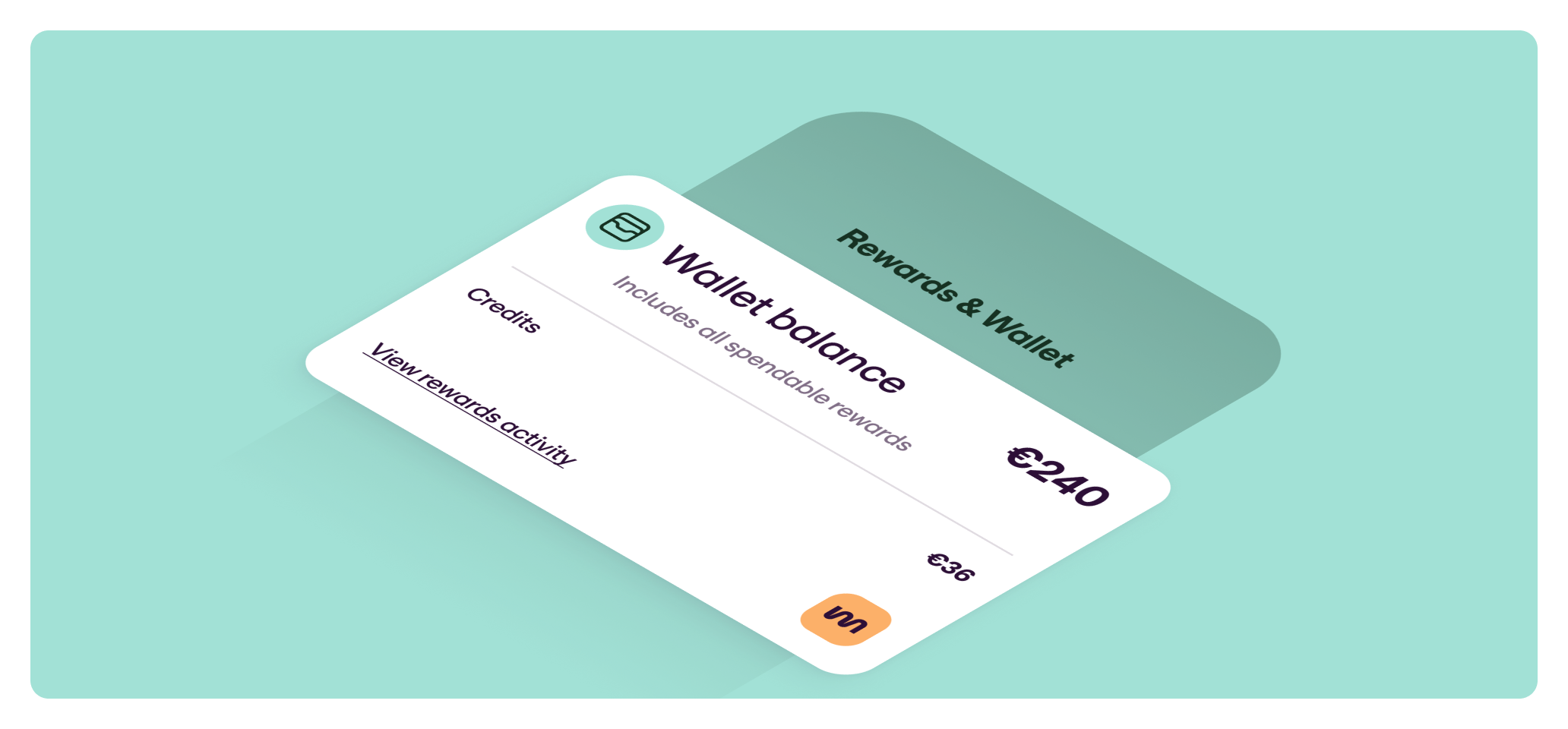5 ways to cash in +10% in revenue from loyalty loops
In this guide, we’ll explore how you can build a respending functionality and leverage it to increase Customer Lifetime Value (CLTV), reduce payment processing cost and boost revenue in your platform.


By letting customers reuse platform earnings or balances, refunds, rewards, and rebates for future purchases, you create a win-win for you and your users – customers get rewarded for shopping, and you get repeat business. It's a loyalty loop that keeps your customers coming back for more.
How to cash in on loyalty loops using a wallet infrastructure
Respending functionality can be built through a wallet or banking infrastructure, allowing buyers and sellers to collect, hold, and manage funds within secure wallet accounts. This stored value can be used as a convenient and cost-effective way to pay for future purchases, fostering a closed-loop spending ecosystem.
Benefits for buyers:
- Enhanced convenience
Buyers can access a more convenient way to pay. They can top-up their account through bank transfer, direct debit, transfer between wallet accounts, or use refund or cashback credits collected from within the platform to respend. - Cost savings
Wallet balances offer lower transaction fees compared to traditional payment methods. When payment method fees are charged to clients, it can range from 0.5% - 3% of the transaction costs depending on the payment method used. Payments through balances, on the other hand, offer lower transaction costs for buyers.
Benefits for platforms:
- Over 20% reduction in payment processing costs
By leveraging wallet balances as an alternative payment method, you can reduce payment processing costs as you can let customers use wallet balance for their subsequent purchases, removing payment fees associated with card processing or other alternative payment methods. - Increased customer loyalty
Reward programs and cashback incentivize buyers to make more purchases within the same platform. The more purchases they make, the more rewards they can collect. Rewards are typically stored in a platform wallet, allowing customers to easily use them for future purchases – no need to jump through hoops or deal with external bank accounts. This convenience keeps them engaged within your platform. - Potential revenue growth
Respending functionality contributes to forming shopping habits driven by incentives. This ultimately drives customer lifetime value and average order value.
Ways to boost respending in your platform
Here are a few examples of loyalty and reward programs that help drive CLTV in your platform, reduce payment costs and boost revenue.
- Points-based program from exclusive purchases
This conventional loyalty program model awards points based on a customer's spending amount. The program structure incentivizes repeat purchases as customers strive to accumulate points and unlock higher-tier rewards. - Gamified loyalty programs
Challenge-based loyalty programs inject a fun and interactive element into customer engagement. These programs encourage users to actively participate with your brand, fostering new habits and building stronger connections.
Customers complete specific actions (e.g., leaving reviews, making referrals) to earn badges or conquer challenges. These achievements unlock rewards and recognition, keeping users motivated and coming back for more. - Credits from refunds
Over 16% of online retail purchases are being returned – a staggering $817 billion worth of products. This proves that returns are a fact of life, making it a necessary evil for e-commerce.¹
To top it all off, the speed and convenience of return influences merchants ability to convert first time buyers into loyal customers.
Refunds are one of the aspects that impact repeat purchases. Refund speed plays a crucial role in influencing a customer's decision to return.
By offering wallet credits as refund alternatives, you can, not only expedite the refund process, but also present a strategic opportunity to encourage respending within the platform.
For example, airlines successfully leverage this concept by offering discounted tickets redeemable in the form of platform credits. These credits incentivize customers to rebook within their ecosystem, fostering loyalty and repeat business.
By using wallets for refunds, you can save over 50% of the direct and indirect cost of refund. Refunding to wallet accounts instead of the customer’ cards or bank accounts encourages them to buy within the same platform again. This also reduces payment processing cost as users don’t need to use cards or other payment methods to pay for their new purchase.
In a case where a transaction is refunded to customer's cards or bank accounts, they’re more likely to look around and make a purchase somewhere else. For you, this means losing the sale altogether, as well as the non-refundable payment processing cost from the original transaction and the refund fee. - Rebates from exclusive items
A recent study reveals a significant correlation between rewards programs and consumer spending habits. Sixty-six percent (66%) of consumers in a survey indicate that the potential to earn rewards influences their purchasing decisions.²
To maximize program effectiveness and cultivate customer loyalty, brands should prioritize personalized, relevant, and valuable rewards tailored to the individual consumer. Such a strategic approach fosters a differentiated brand experience, positioning the company at a competitive advantage within the platform. - Circular money feature in a C2C platform
By offering wallet accounts to sellers, they can opt for respending functionality and allow the reuse of seller earnings to make purchases within the platform. This doesn’t only reduce unnecessary payout and payment costs but also provides instant access to earnings for sellers.
This circular money feature is often used in a C2C platform such as second-hand stores where sellers can also buy and use their earnings to pay for a purchase within the same platform.
Building a respending functionality using Mangopay's wallet infrastructure
Mangopay is one of the leading payment providers in the EU that offers a programmable wallet infrastructure as a convenient and faster way to create wallet accounts for different platform users, such as buyers and sellers.
Using wallets for storing in-app credits or storage of value offers better efficiency in managing payments from end-to-end as platforms can program holding, management, and transfer of funds between accounts faster and in a flexible way.
With these capabilities, platforms can create different wallet types such as rewards, rebates and discounts to allow store of value in dedicated wallet accounts.
Here are features of Mangopay’s wallet infrastructure that allow platforms to access scalable and revenue-generating payment experiences:
- Virtual IBANs - Wallet accounts have virtual IBANs attached, allowing for faster transfers between internal and external accounts. This also means having access to local SEPA transfers within the EEA, enabling faster transfers and soon, instant.
- Compliance - Mangopay has an EMI license that allows us to hold funds on behalf of our users, securely and indefinitely.
- Programmable - Wallet infrastructure is programmable, making it a scalable solution for automating the distribution and transfer of funds within the platform. This allows for more flexibility in managing complex payment flows while saving time on manual payment operations.
- White label solution - Through a wallet infrastructure, you can create wallet accounts for its users. You can then generate revenue from fees charged on wallet facilitated transactions or conversions between currency wallets.
- Multi-currency - Mangopay’s wallet infrastructure offers multi-currency support making it a scalable solution for platforms that operate in multiple geographies. Platforms can issue multi-currency wallets to their users to localize their payment experiences or use them to mitigate FX risks by holding funds in the currencies they need and converting during favorable times.
Get in touch with us to learn how we can help optimize your payment experience and tap into new revenue streams with our wallet infrastructure.
Sources:


